“The Everest record means nothing to me”
Phurba Tashi is a man of few words. The 45-year-old replies friendly but shortly. “This year, I will definitely not climb Mount Everest”, Phurba tells me when we sit down for a few minutes on a bench in front of his “Tashi Friendship Lodge” in the village of Khumjung. Actually, he has no time to talk to me because his family has gathered for a religious ceremony to commemorate Phurba’s parents who both died in the past six months. Some Buddhist monks have come to his Lodge. “The death of my parents is also the reason why I renounce the ascent this time,” says Phurba.
![]() read more
read more
The Sherpas’s ability to forget
“I don’t have any ambitions to climb Mount Everest,” says Ang Dorjee Sherpa. “Too dangerous! Finally, I have a wife and three children.” However, the 47-year-old was a member of Everest expeditions twice. At the end of 1991, Ang Dorjee worked as “Mail Man” for a Japanese expedition who wanted to climb the mighty Southwest Face for the first time in winter. The Sherpa brought the news of the failure at 8,350 meters as “postal runner” into the valley. Two years later the Japanese were back again – and successfully: A total of six climbers reached the summit on a partially new route, the first team on 18 December 1993. The first ascent of the wall in (meteorological, not calendrical) winter was done. That time, Ang Dorjee did not play the postman, but worked as a cook for the Japanese.
![]() read more
read more
Dorje’s Everest sabbatical
Dorje Sherpa is familiar with Everest disasters. In 1996, 20 years ago, he reached the summit of the highest mountain on earth for the first time. Then he belonged to the IMAX film team of the American David Breashears, when a storm in the summit area killed eight climbers within 24 hours. “We were then in Camp 2 at 6,400 meters”, the 50-year-old tells me in his “Buddha Lodge” in the village of Phakding, which lies on the popular trekking route to Everest Base Camp.
![]() read more
read more
Mingma Sherpa: “In the end price matters”
The upcoming spring season on Everest casts its shadows before. Ten “Icefall doctors” were sent to the Base Camp on the Nepalese side of the highest mountain on earth to prepare the route for the commercial expeditions. In the past two years, there had been no summit successes from the south (I deliberately ignore the “success” of Chinese climber Wang Jing and her Sherpa-Team in 2014 who had been flown to Camp 2 by helicopter). In 2014, the spring season had prematurely ended after an ice avalanche in Khumbu Icefall had killed 16 Nepalese climbers. In 2015, the 25 April earthquake had triggered a huge avalanche from Pumori that had hit Everest Base Camp and killed 19 people.
On Monday, the Nepalese cabinet – at last! – gave green light for the extension of the 2015 climbing permits by two years. “It is a welcome move from the government that we hope will help bring back the climbers to the mountains”, said Ang Tshering Sherpa, president of the Nepal Mountaineering Association. But it might be too late for many of the about 800 climbers who got a 2015 permit, including 357 Everest aspirants, to return already this spring.
I asked Mingma Gyalje Sherpa about the upcoming season. The 29-year-old, who has already climbed seven eight-thousanders and recently made headlines by solo climbing the difficult West Face of 6685-meter-high Chobutse for the first time, is head of the Kathmandu based expedition and trekking operator Dreamers Destination.
Mingma, the spring season is around the corner. What do you expect, especially on Mount Everest?
![]() read more
read more
Brice: “Easy to make statements and then do nothing”
He is the doyen of the western expedition operators. The New Zealander Russell Brice has been leading expeditions to the Himalayas since 1974. Hardly any of his colleagues has so much experience as the 63-year-old head of Himalayan Experience, not only in organizing trips to the eight-thousanders but also in dealing with the authorities. It is something that has almost been forgotten, that Russell at an earlier age was an excellent high altitude climber – and an Everest pioneer: Along with the Briton Harry Taylor he first climbed the Three Pinnacles on the Northeast Ridge in 1988.
I wanted to know what Brice thinks about the current situation in Nepal:
Russ, for this spring Himalayan Experience is offering expeditions in Nepal to Mount Everest and Lhotse. How great is the demand?
Very small numbers compared to past years.
Do you notice an impact of the events in 2014 (avalanche in Khumbu Icefall) and 2015 (earthquake and avalanche that hit Everest BC) on your client’s attitude?
![]() read more
read more
Luanne Freer: “Doping on Everest not talked about openly”
“Never open your mouth, unless you’re in the dentist’s chair.” These were the words Salvatore Gravano called “Sammy the Bull”, a mafioso from New York, used to describe the “Omerta”: the unwritten law of the underworld to be silent no matter what happens. Even athletes using doping substances usually say nothing unless they are found to be guilty. In this respect, mountaineering is not an “island of bliss”. Anyone who has ever been on expedition has probably met some climbers who carelessly use medicine that actually should be used in case of emergency – or even performance enhancers. Just nobody of these climbers admits to do so. Luanne Freer is the “Everest doctor”. For twelve years, she has treated climbers in “Everest ER”, the emergency room at the Base Camp on the Nepalese side of the highest mountain on earth. I asked the 57-year-old about her experiences on the topic of doping on Mount Everest.
Luanne, in 2003 you founded “Everest ER”, the highest infirmary in the world. Since then, you have spent many climbing seasons in Base Camp. How widespread is doping among Everest aspirants?
![]() read more
read more
UIAA supports stricter rules on Everest
Backing for the Nepalese authorities: The International Climbing and Mountaineering Federation (UIAA) “fully supports the decision to propose more stringent measures for climbers wishing to scale the world’s highest peak, Mount Everest (29,029ft / 8,848m)”, as it said. These measures will include individuals having to prove they have already scaled a peak higher than 6,500 meters, thus eliminating the possibility of novice climbers scaling the mountain. “Everest should become a mountaineers’ mountain again”, said UIAA president Frits Vrijlandt.
![]() read more
read more
Habeler: “Go to Nepal – but not all to Everest!”
You would not estimate that Peter Habeler has really 73 years under his belt. Slim, wiry, tanned – just one who is still climbing mountains. Along with friends, he is currently repeating many routes in the Alps that he climbed when he was young, the Austrian told me when I met him at a mountaineers’ event in Leverkusen near my hometown Cologne last weekend: “Thankfully, I feel physically very well. But it’s going round in circles: If you train and climb a lot, you’re just in better physical shape.” Even 37 years after Habeler climbed Mount Everest along with Reinhold Messner for the first time without bottled oxygen, the highest mountain on earth is always in his mind – of course also due to the fact that he as a pioneer is questioned on Everest again and again.
![]() read more
read more
Kuriki’s second summit push on Everest failed
The Japanese climber Nobukazu Kuriki has turned around again. The 33-year old abandoned his second summit attempt at 8,150 meters, about 200 meters above the South Col. „Deep snow and high winds“ stopped him, Kuriki tweeted. “I did my best. I’m really disappointed.” Indeed he sounded exhausted and frustrated talking via radio with his team.
![]() read more
read more
The real blind on Everest are the inexperienced
The Nepalese government has triggered a medial avalanche. A week ago, Tourism Minister Kripasur Sherpa mentioned the possibility of stricter rules on granting permits for Mount Everest. The government is considering age limits – from 18 to 75 years – and a reduction of permits for disabled climbers. “The disabled or visually impaired people usually need someone to carry them, which is not an adventure”, Sherpa said. “Only those who can go on their own will be given permission.” The American Erik Weihenmayer, in 2001 the first blind person ever to climb Mount Everest, is outraged. The statement is an overreaction that represents the biases, prejudices and superstition that are very prevalent in Nepal government, Erik writes on Facebook: “It’s a shame that the Minister of Tourism is using the tragedies of the last two years to scapegoat the tiny number of disabled climbers and enact a policy that won’t fix the problem. Frankly, being faced with additional challenges, disability, age, etc. forces a climber to be more prepared and make more cautious decisions.”
![]() read more
read more
Kuriki: “I’ll enjoy climbing including hardship”
Next try. In these days, Japanese climber Nobukazu Kuriki will start his second summit attempt on Mount Everest. As reported before, his first try had failed last weekend, at about 7,700 meters, the level of the Geneva Spur, 200 meters below the South Col. Kuriki is the only climber who tries to scale Everest this fall, climbing alone without bottled oxygen. I have succeeded in contacting the 33-year-old at Everest Base Camp.
Nobukazu, what went wrong during your first summit attempt?
There was deeper snow than I expected, and it took too long to plow through it.
You decided to pitch your tent for your highest camp at about 7,700 meters instead of the usual South Col. Why?
![]() read more
read more
Stricter rules for Everest permits?
The Nepalese government apparently wants to make sure that Mount Everest is taken seriously again. Speaking at an event in Kathmandu on the occasion of the World Tourism Day on Sunday, Tourism Minister Kripasur Sherpa said that new age limits and other more stringent conditions on granting permits for Everest expeditions were in preparation. It is considered to allow only climbers aged between 18 and 75 to climb the highest mountain on earth.
![]() read more
read more
Kuriki turns around on Everest
It would have been a real bang. And probably the headline was already prepared: “Historical Everest climb with only one complete finger”. But this headline will be put away in a drawer until further notice. Nobukazu Kuriki has abandoned his first summit attempt on Everest. “I tried hard taking all my energy, but it took too much time to move in the deep snow”, the 33-year-old Japanese tweeted. “I realised if I kept going, I wouldn’t be able to come back alive.” It is still unclear how high exactly he climbed. According to his GPS signal messenger, he did not reach the South Col. Kuriki had made his “last Camp”, as he wrote, at about 7,700 meters, at about the level of the Geneva Spur, 200 meters below the South Col. From there, it would have been a real marathon stage up to the 8,850-meter-high summit – in particular because the Japanese was climbing solo above Camp 2, not using bottled oxygen, and the route was neither prepared nor secured with fixed ropes.
![]() read more
read more
40 years ago: Everest Southwest Face first climbed
“Everything was said 40 years ago. Nothing has changed.” Doug Scott was tight-lipped when I asked him last spring about the British Everest Southwest Face Expedition in 1975. Late on 24 September, today exactly 40 years ago, Doug and his team comrade Dougal Haston, had reached the summit of Mount Everest after they had first climbed the more than 2000-meter-high, extremely difficult rock wall. After their summit success Scott and Haston survived a bivouac at 8760 meters. Their first climb of the Southwest Face was a milestone in Himalayan climbing, one of the “last big problems” was solved. Five expeditions had failed before, among them a British one in 1972.
![]() read more
read more
Dawa Steven Sherpa: “Ke garne! We carry on!”
There is a jinx on it. Two spring seasons on Everest in a row remained without summit successes (I ignore those of the Wang Jing team in 2014 because they were flown by helicopter to the high camp). In 2014, all commercial expeditions were cancelled after an avalanche had killed 16 Nepalese climbers in Khumbu Icefall. This year, the devastating earthquake in Nepal triggered an avalanche from the seven-thousander Pumori hitting Everest Base Camp and killing 19 mountaineers and support staff. Once again the spring season ended before it had really begun. What does this mean for the Sherpa people?
I called Dawa Steven Sherpa. Along with his father Ang Tshering Sherpa, the president of the Nepal Mountaineering Association (NMA), the 31-year-old is managing “Asian Trekking”, a Kathmandu-based leading operator for expeditions and trekkings in the Himalayas. Dawa Steven scaled Everest twice (in 2007 and 2008) and in addition the eight-thousanders Cho Oyu (2006) and Lhotse (2009). Under his expedition leadership more than 150 climbers have summited Everest. But Dawa Steven is also a tireless fighter for environmental and climate protection in the Himalayas. Furthermore he is leading “Resilient Homes” , a project of the “Himalayan Climate Initiative” to help earthquake-affected communities to rebuild their houses and other buildings – one more reason to talk to him about the current situation in Nepal.
![]() read more
read more



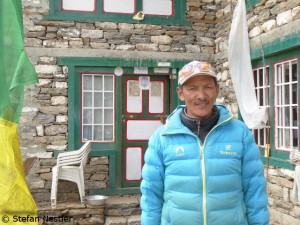

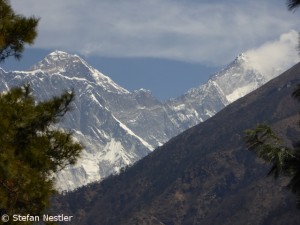
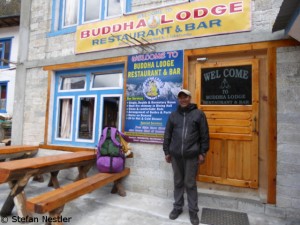
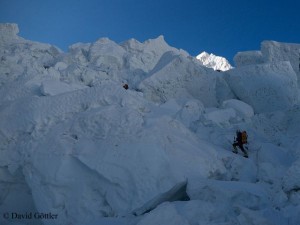
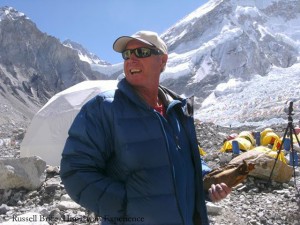
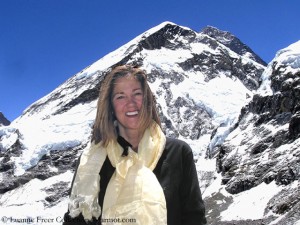
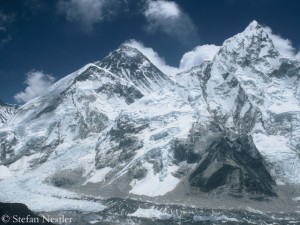
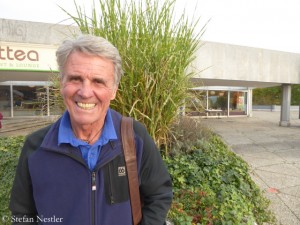
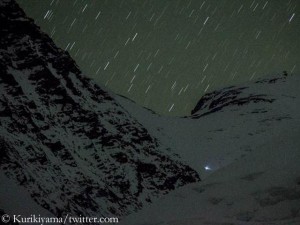
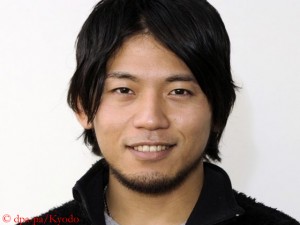
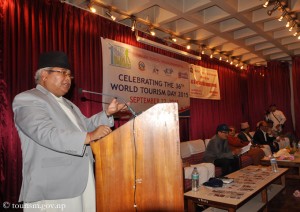
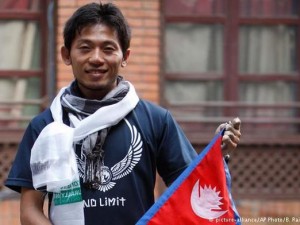







Feedback